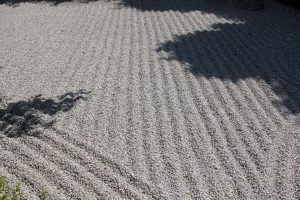As promised in my blog following English Week, I have now written up my thoughts on the seven learning processes or stages of learning. I would be very happy to hear from readers what they think about these ideas. It forms part of a wider project on a Waldorf theory of learning, which I am working on – but which is going to take a while to finish. This blog with the accompanying text is meant as a start.
Stages in the learning process
In 1999 I published an article in the journal Paideia “Life processes and learning”, in which I drew together ideas based on Steiner’s (Steiner, 1996a) notion of the life processes. This prompted an interesting reply by James Dyson, who had written the foreword to the recent translation of Steiner’s text ‘Anthroposophy: A Fragment’ a few years earlier, in which the life processes are described. In the years since then, I have continued to work on these ideas and am now beginning to work out how these can be related to a Waldorf theory of learning. This more comprehensive work is still in progress but I thought I would summarize my thoughts to date, mainly to garner feedback and suggestions from readers. At English Week 2016, I presented these ideas and a number of people asked where they could read about it.
A short version in form of an interview and an overview has been implemented in the elewa course on Sustainable language teaching and learning.
Correspondences between body and mind: embodied mind and ‘en-minded’ body
Steiner suggested that there is a correspondence between the processes at work in the human organism and the processes in the mind (Heusser & Weinzirl 2014 ). In his unpublished work, “Anthroposophy –a fragment” Steiner (Steiner 1996b) attempted to show that within the processes of sense perception, various life processes are at work in our bodies that come to expression in our mental activity. At the same time our thoughts, feelings and intentions influence how we perceive the world. As a heuristic tool, the idea of the life processes offers a fully holistic account of human experience that sees body, mind and world as a continuous whole, with the human I as mediating factor. Our body is a part of the natural living world and subject to same formative forces. Our mind is therefore linked to the world through the senses, through our bodily processes and through our spiritual core of being, the I. It is the I that is the source of our consciousness, which manifests in our bodily (i.e. neural) processes. When we attend to the world our consciousness is outside in the object of our attention; when we reflect, our consciousness is mainly within our thinking and feeling and in the act of perception our I is active in constructing what we experience. For this reason, we can say that the I is both active in the periphery and at the centre of our personal world.
Just as each sense organ relates to a particular modality in the world, such as light, sound or movement, so our sense experiences provide us with a basis for understanding the world. This understanding is culturally mediated by language and by cultural concepts we learn. In his Philosophy of Freedom, Steiner (Steiner 1963) argues that with self-schooling the human being can derive concepts of reality that are not shaped by social and cultural constructs, but this is a special case and does not usually apply to our everyday experience. This fact is often overlooked in anthroposophical accounts of human nature- freedom in Steiner’s sense is a potential state, not the norm. To acknowledge this does not mean rejecting Steiner’s understanding of the I or indeed the spiritual dimension of human life and the world. Whatever experiences we have of spiritual reality, need to be clothed in culturally specific language and images. The words and metaphors we use to describe them are based on empirical/sensory experience, or are borrowed from the culture we belong to.
Our various sense organs emerge out of specific processes that reflect a particular relationship within the world, such as light shaping the eye as an organ of sight. However, Steiner argues that behind the world that our senses perceive is another world, out of which the sense world emerges “as if out of a sea of existence” (1996b, 100). Just as the world of light has shaped our ability to see, so our sense of warmth has been created by a world of warmth, and our sense of touch relates to the tactile world. Through our interrelationships with these pre-sensory worlds, “our inner world of concepts, feelings and desires comes about” (1996b, 100). The concepts we build (or usually borrow from our culture) shape what we see. Our embodied experience of seeing also provides us with a basis for the metaphor of seeing as understanding and being en-light-ened, just as our experience of touch is the basis for the experience we describe with the metaphor of tact. It is the I that mediates these worlds.
If you want to read more, you can download the whole article as a pdf.
Looking forward to your thoughts and replies. Greetings Martyn



